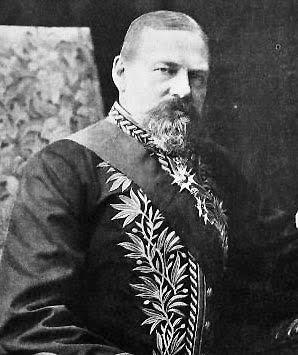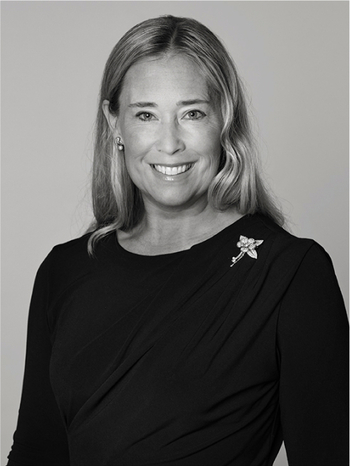Vas, Zun, porslin. Qingdynastin med Qianlongs märke och period (1736-95).
Efter arkaisk bronsmodell, s.k. Zun, turkos glasyr, arkaiserande dekor i relief. Höjd 26 cm.
Proveniens
Gustaf Oscar Wallenberg (1865-1937), Stockholm, and thence by descent within the family.
Gustaf O. Wallenberg was a Swedish businessman, diplomat and active politician. He was the son of André Oscar Wallenberg, founder of Stockholm Enskilda Bank (today's Skandinaviska Enskilda Banken, known as SEB). After a career in the Swedish Navy he turned to the business world and was active in improving the transoceanic shipping industry.
Wallenberg was Sweden's Envoy to Tokyo between 1907-1918. In April 1907 he travelled to Beijing to amend the Treaty of Canton (1847) between Sweden-Norway and China and to establish diplomatic relations between Sweden and the Qing Court. As the Swedish Envoy Extraordinary and Minister Plenipotentiary at the Court of Peking, he successfully negotiated and signed with Lien Fang, the Guangxu Emperor's High Commissioner Plenipotentiary and Senior Vice-President of the Wai Wu Pu, the Treaty of Amity, Commerce and Navigation, between Sweden and China, which was signed in Beijing on 2 July 1908, with an additional article signed on 24 May 1909.
The collection was acquired between 1907 and 1918 when Wallenberg was the Swedish Envoy in Tokyo, and possibly during his diplomatic service in China. Documents preserved at the Östasiatiska Museum in Stockholm demonstrate the importance of Gustaf Wallenberg and his extensive connections with the Qing government to the Swedish engineers and businessmen who were in China during this period, such as Johan Gunnar Andersson, Osvald Siren, Orvar Karlbeck, Erik Nordstrom and many more.
Gustaf Wallenberg was the grandfather of Raoul Gustaf Wallenberg (1912-1945), an architect, businessman, and diplomat. Raoul Wallenberg has been designated by Yad Vashem as one of the Righteous Among Nations, as well as having many monuments and streets named after him in honour of him saving thousands of Jews in German-occupied Hungary during the Second World War, while serving as Sweden's Special Envoy in Budapest. As he lost his father the same year he was born, he was brought up also by his grandfather Gustaf Wallenberg, with the Chinese porcelain collection around him, inheriting part of the collection when his grandfather passed away in 1937. He died at a time unknown between 1945 and 1947, further to his detention in Budapest by General Malinovsky in 1944, and arrest by the Soviet authorities. Further to his disappearance his part of the Chinese collection was deposited at the Östasiatiska Museum in Stockholm, and later released to the family.
The label Wallenbergs dep, is from when this piece was at the Museum of Far Eastern Antiquities in Stockholm until released when R Wallenberg was declared dead.
Utställningar
For another turquoise glazed vas in another bronze shape from the Qianlong period, see Christies, lot no 3052. 1 DEC 2010 | Live auction 2832, Important Chinese Ceramics and Works of Art.
For another turquoise glazed vas in another bronze shape from the Qianlong period, see Sothebys, lot no 3145. Fine Chinese Ceramics & Works of Art, Hong Kong, October 8th 2013.
Litteratur
Soame Jenyns in Later Chinese Porcelain, London, 1951, p. 60, mentions that a stone tablet was excavated at Jingdezhen in 1915 titled 'Orders and Memoranda on Porcelain' in which Tang Ying, Superintendent at the Imperial Kilns at Jingdezhen, discusses his efforts to simulate bronze vessels.
Övrig information
The present vase is a fine example of innovative glazes that were being developed during the Qianlong period and were applied to popular archaic shapes of early bronzes.
They pay testament to the Emperor’s keen interest in antiquity and his subsequent aesthetic taste which dictated porcelain production in the imperial kilns.



















































